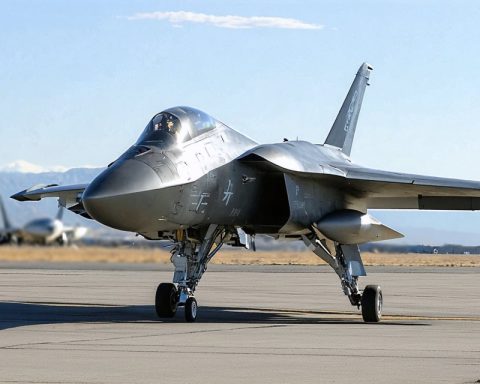In 2015, a report that pitted the latest F-35 stealth fighter against the older F-16 Fighting Falcon in simulated dogfights sparked widespread debate. The findings suggested that the F-35 struggled significantly against its predecessor, the F-16. However, the story behind this report reveals much more nuance than the initial headlines suggested.
The F-35 involved in the trials was an early AF-2 test model that had limited capabilities. Missing key features like off-boresight targeting and its signature stealth technology, this test version didn’t represent the full potential of the F-35 platform. These constraints skewed the results, making the nimble F-16 appear superior in controlled dogfight scenarios.
In actual combat settings, the F-35’s strengths lie in its advanced stealth features, sensor fusion, and long-range targeting capabilities. These characteristics allow the F-35 to neutralize threats from a distance before rivals like the F-16 can even detect its presence. While the F-16 remains a highly agile aircraft, the F-35 is designed for modern warfare, where technology and stealth play crucial roles.
Despite its slower pace and less impressive aerobatics compared to 4th generation fighters, the F-35 employs a shift in strategic air combat. Prioritizing data integration over traditional combat maneuvers, the F-35 ensures air superiority in modern battles. As the debate continues, the 2015 report serves as a reminder of the rapidly changing dynamics in aerial warfare, emphasizing that raw speed and agility are no longer the sole determinants of air superiority.
Unveiling the Future of Aerial Warfare: The F-35’s Untapped Potential
In the ever-evolving landscape of aerial warfare, the focus has shifted from sheer speed and agility to advanced technologies that pave the way for strategic dominance. A widely discussed 2015 report compared the latest F-35 stealth fighters to the older F-16 Fighting Falcons, concluding that the latter excelled in simulated dogfights. However, this conclusion did not account for the F-35’s full capabilities, largely due to the use of an early test model lacking critical features.
Innovations and Advanced Features of the F-35
The F-35 Lightning II, developed by Lockheed Martin, is at the cutting edge of stealth technology and sensor fusion. Unlike its predecessors, the F-35 integrates data from various sources, enhancing situational awareness and improving decision-making throughout the battlefield. This ensures that pilots can detect, manage, and neutralize threats long before they are within visual range.
Key Innovations Include:
– Stealth Technology: Minimizes radar detection, allowing operators to undertake missions undetected.
– Sensor Fusion: Provides pilots with a comprehensive, real-time operational picture, combining data from onboard and offboard sensors.
– Advanced Avionics: Equipped with highly specialized electronic warfare capabilities and advanced radar systems.
F-35 vs. F-16: A Strategic Transition
While the F-16 Fighting Falcon is celebrated for its speed and agility, particularly in short-range aerial engagements, the F-35 represents a paradigm shift in military aviation strategy. The F-35’s design focuses on integrating technological advancements to ensure superiority in modern, electronically dense battle environments.
Use Cases and Strategic Advantages
– Long-Range Target Engagement: The F-35 can engage threats at a significant distance, keeping pilots out of danger zones.
– Interoperability: Designed for seamless integration with allied forces to enable coordinated, multinational military operations.
– Mission Versatility: Capable of performing a diverse range of missions, from ground attack to aerial reconnaissance.
The Future of Aerial Combat: Predictions and Perspectives
As we edge closer to fully autonomous systems, the F-35 stands as a forerunner in embracing AI and machine learning for predictive maintenance and operational efficiency. The investment in these technologies emphasizes an overarching commitment to sustainable tactical advantage.
Looking ahead, the trends suggest a growing emphasis on unmanned aerial systems (UAS) working in tandem with manned platforms like the F-35, which will enhance both adaptability and lethality in theater operations.
Conclusion
The ongoing debate regarding the F-35 is a testament to the dynamic nature of air combat and military innovation. As defense strategies continue to evolve, understanding and leveraging advanced technologies such as those offered by the F-35 become essential for maintaining aerial superiority in the 21st century.
For further insights into advanced aerospace engineering and defense systems, visit the official Lockheed Martin website.












